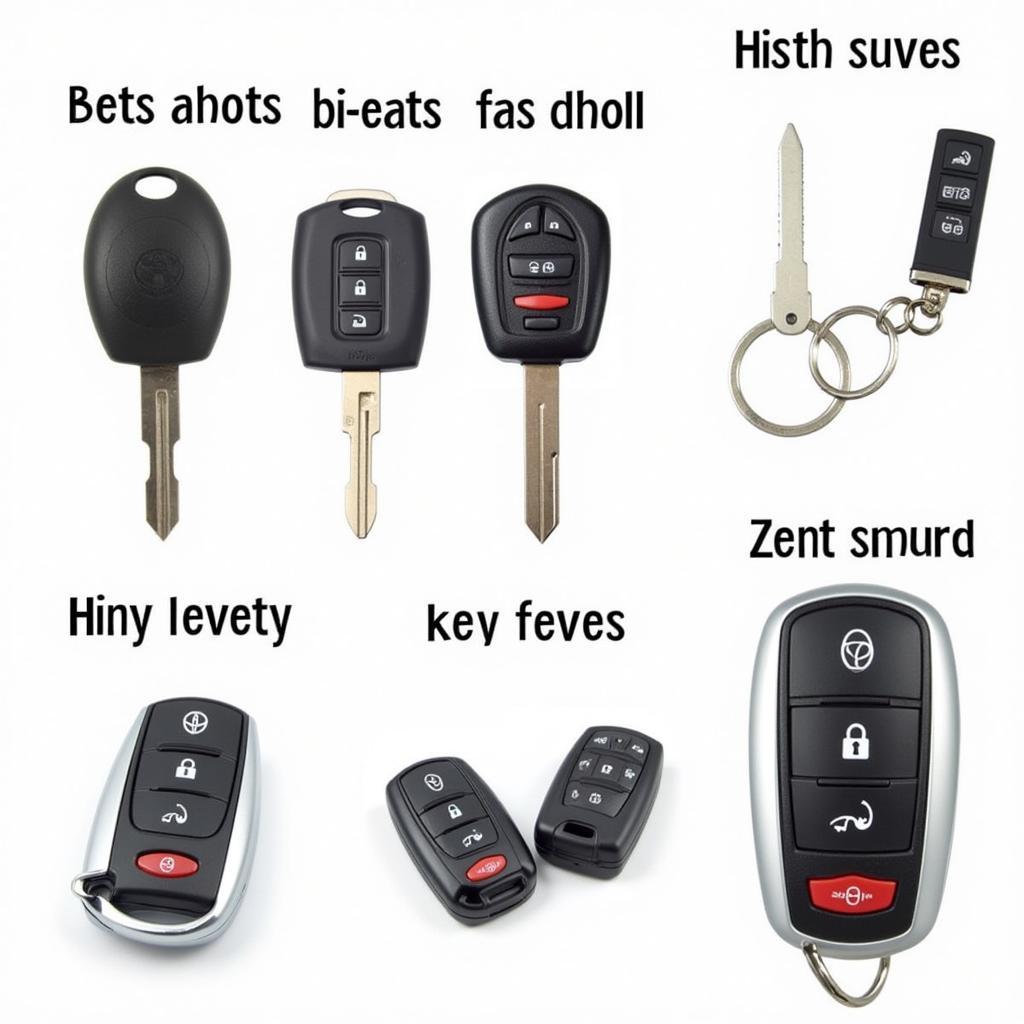The 2014 Toyota Highlander is a reliable and popular SUV, known for its comfort and practicality. Like most modern vehicles, it relies on a key fob for keyless entry and ignition. But what happens when your key fob starts acting up? Or if you need a replacement? This comprehensive guide covers everything you need to know about the 2014 Toyota Highlander Key Fob, from its functions and features to common problems and solutions.
Understanding Your 2014 Toyota Highlander Key Fob
Your key fob is a small, powerful device that communicates with your Highlander, allowing you to control several functions remotely. These typically include:
- Locking and unlocking doors: Press the lock button to secure your vehicle and the unlock button to grant access.
- Panic alarm: Activate a loud alarm to deter theft or locate your vehicle in a crowded parking lot.
- Remote start: Start your engine from a distance and pre-heat or cool the cabin for added comfort (if equipped).
- Liftgate access: Open the rear hatch with a simple button press for convenient loading and unloading.
Common 2014 Toyota Highlander Key Fob Issues
While Toyota key fobs are known for their durability, you might encounter some hiccups over time. Here are some common problems:
- Key fob not working: This could be due to a dead battery, signal interference, or a faulty key fob.
- Key fob battery replacement: The battery in your key fob has a limited lifespan and will need replacing eventually.
- Programming issues: If you replace your key fob or have a malfunctioning one, it needs to be programmed to your specific Highlander.
2014 Toyota Highlander Key Fob Battery Replacement: A Step-by-Step Guide
Replacing the battery in your key fob is a relatively simple process that you can do yourself. Here’s how:
- Identify the battery type: Your 2014 Toyota Highlander key fob uses a CR2032 battery.
- Open the key fob: Locate the small release tab or notch on the back of the fob and use a small flat-head screwdriver or a coin to pry open the casing.
- Remove the old battery: Carefully remove the old battery from its compartment, paying attention to its orientation.
- Insert the new battery: Place the new CR2032 battery into the compartment, ensuring the positive (+) side faces up.
- Reassemble the key fob: Align the two halves of the key fob and press them together until they snap back into place.
Pro Tip: Avoid touching the battery’s flat surfaces with your fingers, as this can reduce its lifespan.
Programming Your 2014 Toyota Highlander Key Fob
Programming a new or replacement key fob can be a bit tricky and might require a visit to a Toyota dealership or a qualified locksmith. However, some models allow for DIY programming. Consult your owner’s manual or search online for specific instructions for your Highlander.
Keeping Your Key Fob in Top Condition
- Protect it from physical damage: Avoid dropping your key fob or exposing it to extreme temperatures.
- Keep it away from water: Moisture can damage the electronic components inside the fob.
- Replace the battery regularly: Most key fob batteries last 2-3 years.
 Different 2014 Toyota Highlander Key Fobs
Different 2014 Toyota Highlander Key Fobs
When to Seek Professional Help
While some key fob issues can be resolved with simple troubleshooting, others might require professional assistance. If you’re experiencing persistent problems, contact your local Toyota dealership or a qualified automotive locksmith for help.
2014 toyota highlander key fob change battery
Need more detailed instructions on changing your key fob battery? Our step-by-step guide with images will walk you through the process.
2014 toyota highlander key fob battery
Learn more about the specific battery type your 2014 Toyota Highlander key fob uses and where to purchase replacements.
Conclusion
Your 2014 Toyota Highlander Key Fob is an essential part of your driving experience, providing convenience and security. By understanding its functions, common problems, and maintenance tips, you can ensure it continues to work flawlessly for years to come. If you encounter any issues, don’t hesitate to seek professional assistance to get you back on the road with peace of mind.

Leave a Reply